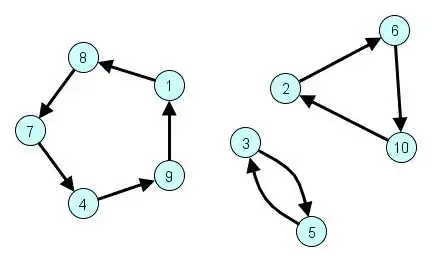I have attempted a proof of this, but upon looking at my notes, I feel it might be incorrect: it is noticeably simpler than the one in my notes.
Proposition: any permutation in $S_n$ can be written as a product of disjoint cycles.
Proof (attempt): $s\in S_n$. Let $\langle s\rangle$ act on $X=\{1,\cdots,n\}$. Define $x\sim x'\iff x'\in\text{Orb}(x)$ for $x,x'\in X:$ this is clearly an equivalent relation, hence the orbits partition $X$. Each orbit corresponds a cycle in $s$, so we are done.
Does this hold, or have I missed something vital?
